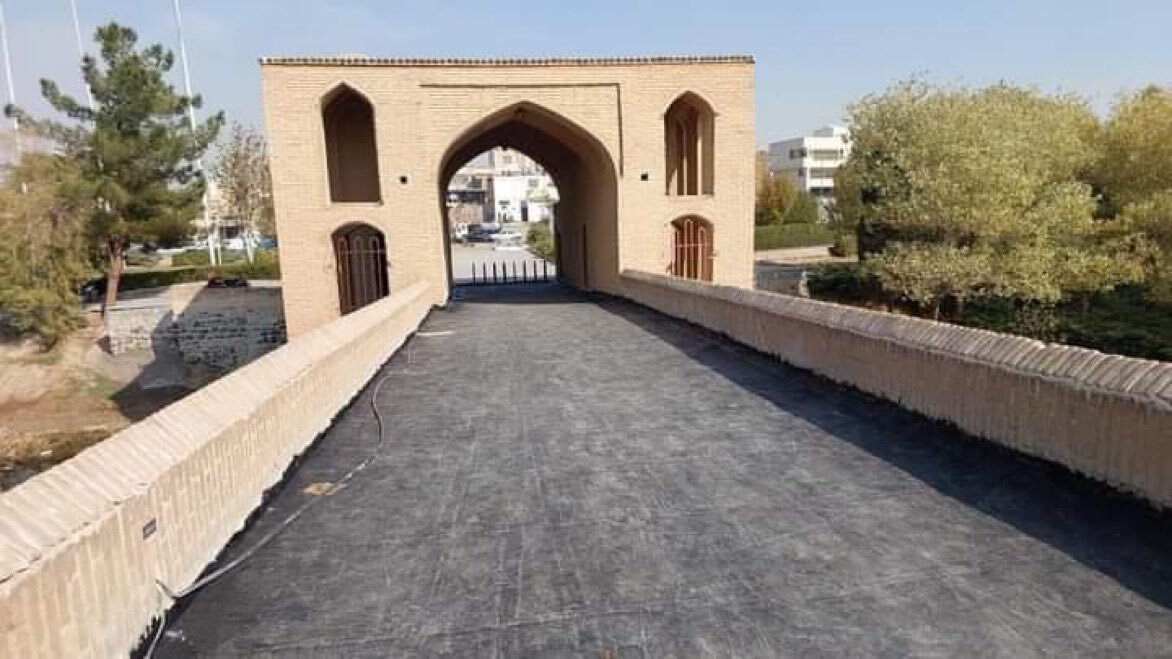Isfahan official dismisses concerns over ‘false’ restoration of ancient bridge

TEHRAN – On Sunday, an official with Isfahan’s cultural heritage department dismissed recent concerns over the alleged false restoration of an ancient arch bridge in the historical Iranian city.
Fresh images of Pol-e Shahrestan have caused worry among some citizens and cultural heritage activists regarding inappropriate intervention in the restoration of “a 2,000-year-old” monument.
Having circulated on social media platforms, the photos suggest the deck’s outer surface has deteriorated, IRNA reported on Sunday.
"Evidence shows that this historical monument is being restored by a contractor graded by Isfahan’s cultural heritage department," the report said.
Pol-e Shahrestan, located just outside the city to the east, is the oldest one to span the river in the vicinity of Isfahan, and its construction has been attributed to the period before the Arab conquest in the 7th century, displaying, according to Arthur Upham Pope, features of Roman Bridges.
Talking to IRNA, Morteza Farshadnejad, who is a restoration pioneer in Isfahan, stated: “That style of restoration and asphalt covering of the bridge was not the right approach. The historical bridge should not have been altered in style, and instead of asphalt covering, lime mortars should have been used for its insulation.”
However, they have now altered this bridge by changing its style and asphalt covering for insulation against moisture, Farshadnejad said.
“Covering applied to the bridge deck is not asphalt; rather, it's a bitumen-based moisture isolation layer, intended to prepare the stone flooring after correction,” according to an official with Isfahan’s Cultural Heritage, Tourism and Handicrafts Department.
The coating applied to the bridge's surface is not asphalt or Isogam (special synthetic roof insulation); it's a light and thin layer of bitumen used for isolation purposes, the department’s spokesperson explained.
Pol-e Shahrestan is the oldest bridge constructed over the Zayandehrud River, on which some fundamental restorations have been carried out in the past 40 or 50 years, Shahram Amiri added.
The official then referred to previous restorations, saying” In previous restorations, diverse materials were used on the deck of this bridge." The current project is aimed at rectifying the diverse materials previously used on the deck’s surface.”
In that line, the bridge’s deck has recently been lightened, and considering the possibility of water penetration from the surface to the brick arches, while collecting the stone floorings, a light and thin layer of bitumen was applied to isolate the flooring on the platform.

At present, this bitumen layer is moist, and after completely drying, it will become stone flooring. "This process is a customary insulation practice," he stated.
Last year, Isfahan’s tourism chief said his directorate seeks maximum protection for the five historical bridges built over the Zayanderud River.
“One of our deep concerns in Isfahan is the maintenance of the five historical bridges constructed over the Zayanderud River,” the official said. “Undoubtedly, protecting the valuable heritage of our ancestors, especially in the historic city of Isfahan, is possible with the participation and assistance of all urban institutions.”
On the southern edge of Isfahan lies Zayandarud, the unnavigable river that has been the major source of water in the region since the earliest settlements in its environs.
Until the transfer of the Safavid capital to Isfahan in the late 16th century, the river was well outside the city walls. Bridges, however, have been constructed across the river since as early as Sasanian (224-651) times.
Si-o-se-pol and Khaju are commonly known as the iconic bridges of Isfahan and are among the main travel destinations of the ancient city.
The Safavid bridges helped control the flow of water and manipulate it for the irrigation of agricultural lands and private gardens alike, as well as for the regulation and distribution of fresh water for the city’s consumption.
Most extraordinarily, however, the Safavid bridges of Isfahan were designed to partake in the city’s expanded arenas of public entertainment and leisure. Like a promenade, two of the Safavid bridges are affixed with wide walkways both open to the elements and covered for poor weather; they have seating niches and royal pavilions for recreation purposes.
Isfahan was once a crossroads in international trade and diplomacy in Iran and is now one of Iran’s top tourist destinations for good reason. The city is filled with many architectural wonders, such as unmatched Islamic buildings, bazaars, museums, Persian gardens, and tree-lined boulevards, to name a few.
AFM
Leave a Comment